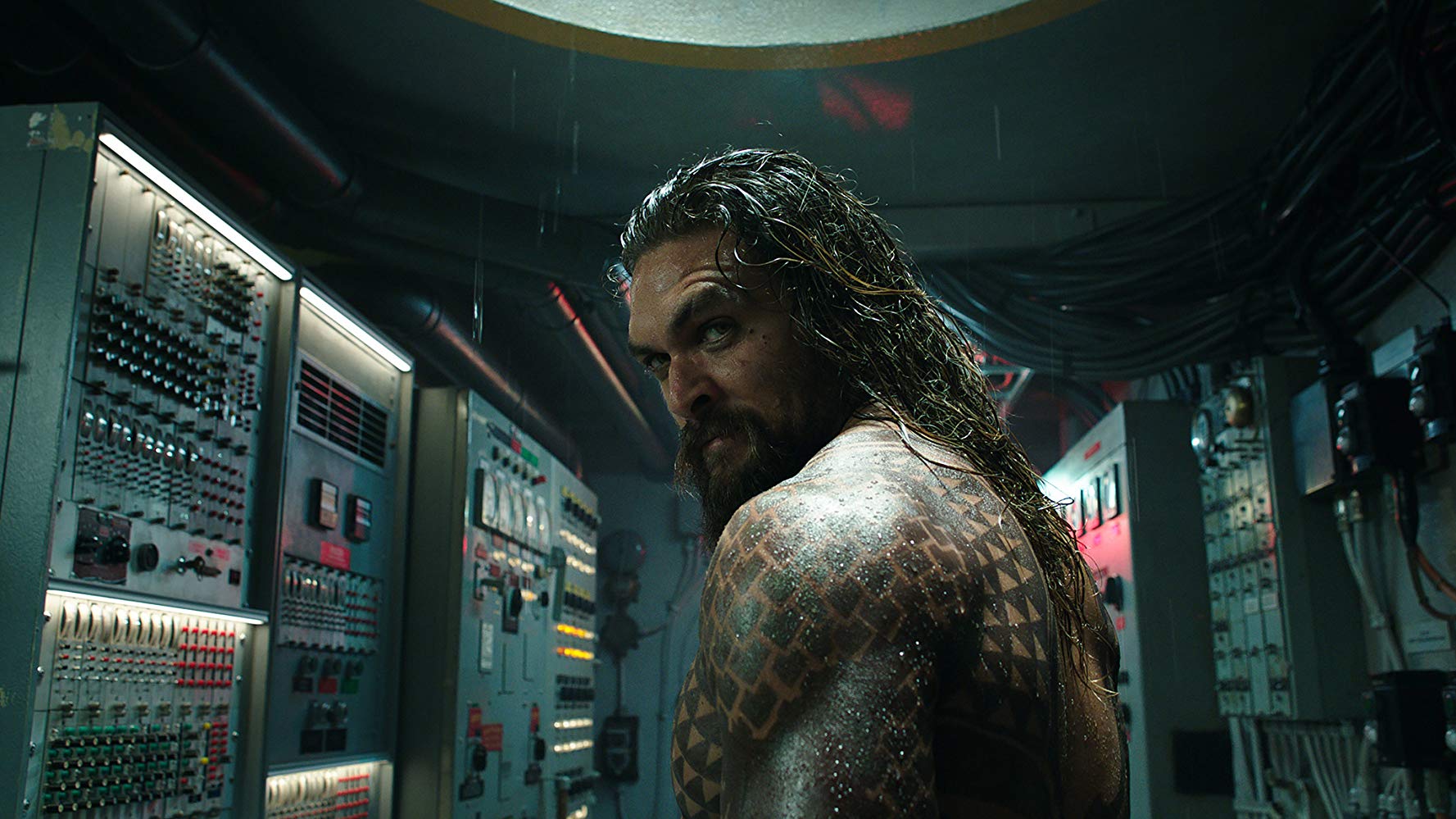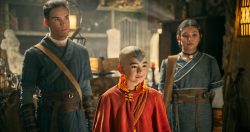There is an alarming amount of hate on the Internet for Aquaman (2018). Luckily, I’m here to explain what the haters are missing.
The latest installment in the DC Extended Universe (DCEU) is a big departure from the too-serious films of Zack Snyder, the most recent being the ill-received Justice League (2017). Director James Wan, best known for his horror work on Saw (2004) and The Conjuring (2013), is now at the driver’s seat and brings a more playful energy that the DCEU was lacking.
Since its release in December, Aquaman has received criticism for being another messy, over-the-top, unoriginal superhero origin story. While all this may be true, it would be a heinous crime to lump Aquaman together with similar superhero movies that fell flat. There is a plethora of absolutely bonkers elements in this film that set it apart from all the others. Such bonkers elements include, but are not limited to: armored stingrays that shoot laser beams, a giant octopus playing the drums, Julie Andrews voicing a Kraken-like sea monster, Willem Dafoe sporting a man bun and riding a hammerhead shark, and Pitbull sampling “Africa” by Toto.
If those are somehow not entertaining enough, the special effects are revelatory. The shots of Atlantis are as beautiful as those of Pandora from Avatar (2009). With Wan determined to honor the comics, about two-thirds of the movie take place in the underwater world. The technological challenge was worth it, as the top-notch aquatic effects nail details like changes in the sound of characters’ voices and the way in which their hair (and Jason Momoa’s beard) flows.
The action is relentless and supplemented by the hilariously overqualified supporting cast. At the beginning of the film, Aquaman’s mother, Queen Atlanna (Nicole Kidman), gets an epic fight scene that Wan impressively choreographed into one, long take. From there, the action unendingly builds to a final battle that looks like it’s from an underwater Lord of the Rings movie set to a glorious soundtrack full of 80s synth and guitar riffs.
One thing that haters and fans can agree on is that Aquaman is a lot. The attempt to do so much in a single film is convoluted and goofy, but labelling it as “so-bad-it’s-good” is a disservice to Wan’s achievement.
As I left the theater, cheeks hurting from smiling for two and a half hours straight, I began to realize that my enjoyment of this film went beyond all its wackiness. Was it the tasteful blend of Star Wars-like sci-fi and Indiana Jones-esque adventure that struck me? Not quite, though I appreciated Wan’s clear reverence for Lucas and Spielberg. Perhaps it was the condemnation of ocean pollution? No, but I was pleased they managed to also sneak that in, even if the commentary was just—excuse the pun—surface-level.
Aquaman resonated with me for a reason that was right in front of me the whole time: the casting of Jason Momoa, the half-Polynesian, half-white actor best known as Khal Drogo from HBO’s Game of Thrones, as the titular character.
Sure, there’s no denying that the tatted-up, trident-wielding Momoa is a hunk. In fact, Warner Brothers capitalized on this and launched a hilarious marketing campaign to target mothers who will take their children to see the film with the hashtag #MomsForMomoa.
The choice to cast Momoa may have attracted female moviegoers, but it also created a powerful on-screen family dynamic. Aquaman, born Arthur Curry, is half-Atlantean and half-human, and thus struggles with whether he belongs in either world. Such tension can also be found in Momoa’s life. He grew up in Hawaii but faced judgment for not looking as Hawaiian as those around him; he later moved to the Midwest and did not resemble the predominantly white population there, either.
I’ve fortunately never been called a “half-breed mongrel” like Arthur often is in the film. But as a half-Asian, half-white person, I can certainly relate to feeling like—again, excuse the pun—a fish out of water. Growing up between two cultures, but not quite feeling “enough” of either, is confusing and frustrating. It’s an experience I have yet to see much of on screen. The last place I expected to find it was in a superhero movie.
Though not responsible for casting Momoa, Wan did choose to convey Arthur’s parents’ interracial union through thoughtful flashbacks that reveal how Arthur came into being out of unprejudiced love before the world made him pick a side. He was born of Queen Atlanna and a surface-dwelling Polynesian lighthouse keeper (Temuera Morrison). Arthur grew up on land, knowing he was not fully human but well aware that he would not be accepted in Atlantis. The film’s main conflict is between these two worlds, which makes Arthur the perfect hero to bring them together rather than let them tear each other apart.
Wan takes the trope of heroes who are initially reluctant to join a cause and roots it in Arthur’s mixed identity. Arthur feels he has no reason to care about the war brewing in Atlantis since he is not really one of them. Arthur’s lack of belongingness, coupled with Momoa’s (literally) enormous presence, makes for a hero in touch with his problems but never defined by them. Some critics may think it uninteresting to have a main character so physically invulnerable and unbeatable, but I found it refreshing to see a strong protagonist confidently transform his biracial background from a source of frustration into a tool to save the world—even if the stakes are utterly ludicrous.
Traditionally blonde-haired and blue-eyed, Arthur was always of two different worlds in the comics. However, the writers failed to use that characteristic to make him more intriguing. Since he debuted in the 1940s, Aquaman has become somewhat of a laughing stock within the DC Comics world for being a dull character whose “coolest” power was being able to talk to fish. Bringing Aquaman to the screen allowed for a blank slate to do something new and compelling with the character. Choosing Momoa may have gotten more moms to the theaters, but the background he brings to Arthur adds the complexity that Aquaman needed to be taken seriously again.
Aquaman was extremely lucky to be in the skilled hands of Wan, a Malaysian-born Australian who champions ethnic diversity in all his films and refuses to compromise entertainment for fear of critics’ disapproval. Aquaman is aware of the ridiculousness of its source material; rather than trying to hypercorrect for that like Snyder, Wan blasts it on the screen in all its glory.
Wan’s choices are fun, assured, and above all, smart. He knows when to offset action-packed set pieces with affecting dramatic moments. He makes great use of Momoa’s physical strength, but also brilliantly turns Arthur’s most laughed-at power of talking to fish into the key that unlocks his compassion for life both on land and in the sea. The ability to understand others is what helps him to be understood. Talking and, more importantly, listening become Aquaman’s greatest asset.
Despite the negative reviews, Aquaman is proving a bigger and bigger hit at the box office. I never imagined I would have become so invested in its success, but it genuinely makes me happy to know that so many people are seeing this outrageous yet touching film. They are seeing a gleefully colorful comic book movie that is unafraid to be a comic book movie. They are also seeing a family that looks a little like mine and so many others. In a year when Marvel has greatly improved representation among superheroes with Black Panther (2018) and Spider-Man: Into the Spider-Verse (2018), the DCEU has taken its best step in the right direction since Wonder Woman (2017). Aquaman haters are right to note the cheesy dialogue and muddled plot. But they are wrong to give those as reasons not to see it. Go see Aquaman for a thoroughly great time at the movies. And, in doing so, you’ll continue to show studio executives that movies made by POC directors starring POC heroes can be successful, too—even if they don’t have any of the Chrises in them.





